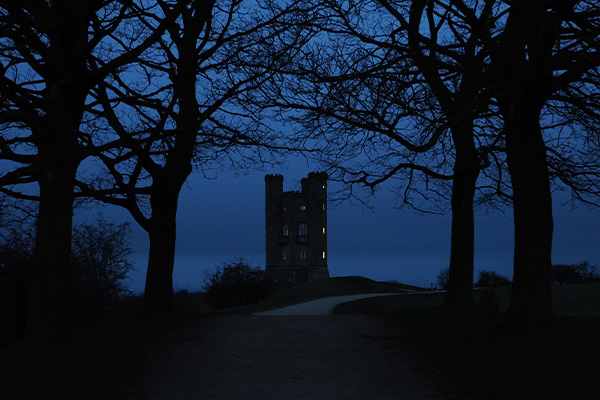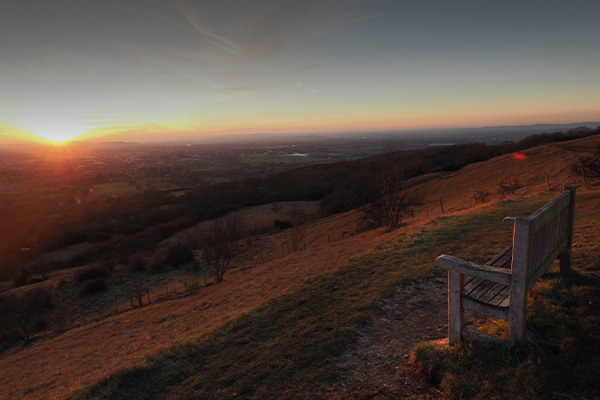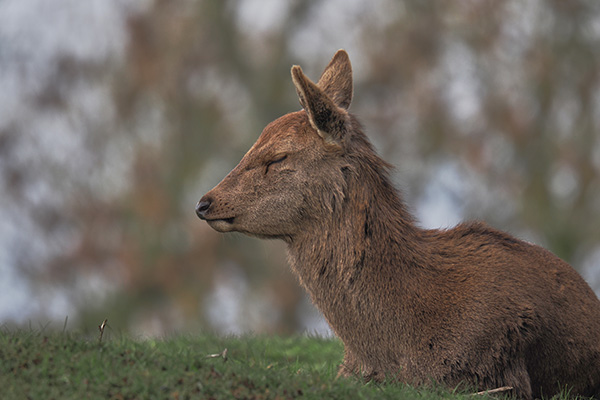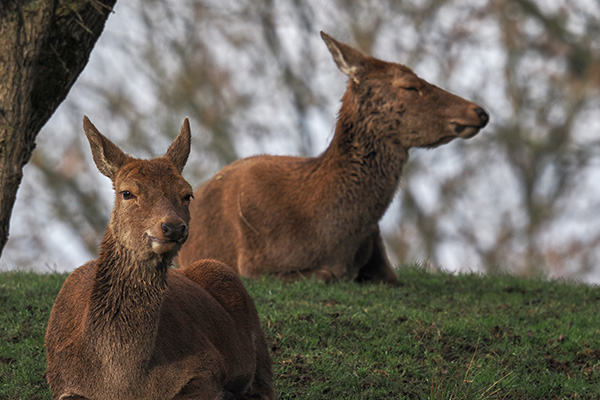OM System OM-1 Mark II | It's In Our Nature
2 years ago OM System launched the OM-1, its flagship model, micro-four-thirds sensor camera. The camera was extremely well received by outdoor photographers but not one to rest on their laurels; they have been working in close proximity with its users and have implemented many useful upgrades for the new OM-1 Mark II.
Find out what's new in this video or keep reading!
The Camera
Aesthetically the OM-1 mark II is virtually identical to its predecessor but now we have the OM System branding proudly embossed across the prism. It features the same Micro Four Thirds, 20.4 MP, Backside Illuminated Stacked Sensor and True Pic X processor as the previous version but it comes packed full of new features and significant upgrades to what was already there.
Some of the standouts include improved AI Subject Detection AF, an increased buffer size, a built-in Graduated Neutral Density filter, Enhanced Blackout Free Sequential Shooting and an incredible 8.5 EV Stops of In Built Image Stabilisation. I was able to put the latter to the test with the just released M.Zuiko DIGITAL ED 150-600mm f5.0-6.3 IS Lens.
Other features include a Right Handed Menu to give you easy access while shooting, an additional stop to the LIve ND filter which now goes up to ND128, Vertical Video for easy social media sharing and a huge improvement is the ability to shoot 14bit RAW in High-res mode which gives you 3x the colour tones of 12bit.
Landscape Photography
OM Systems' tagline for this camera is “It’s in our nature” and it is very much geared toward the outdoor photographer.
The OM-1 mark II features the same IP53 Weather Sealing as its predecessor which is a must for landscape photography. We once again have the Live ND mode that has been extended from 64 to 128 but now we also have a Live Graduated Neutral Density filter mode that has been added allowing you to apply in-camera. This gives the user the ability to add real filters to the lens on top and allows for a wealth of creative possibilities.
You can still focus stack up to 15 images in-camera like the previous version but there has been a significant improvement to the High Res Mode. You can still shoot 50MP photos handheld and 80MP photos on a tripod but now you can produce a 14-Bit Raw file instead of 12-Bit which gives you 3x the colour tones, meaning a much higher dynamic range to play with in editing.
Bird and Wildlife Photography
The OM-1 II has been given some serious upgrades to aid bird and wildlife photographers.
The camera has an incredible 8.5 stops of IBIS, which gives you improved stabilisation with all lenses ranging from consumer to pro. The AI Detection for birds has received a completely revised tracking and algorithm update making it easier than ever to track and capture your subject. You can also choose which subject you want to track when there are multiple to choose from. Subject selection was available on the OM-1 when using Face/Eye detection on a group of people, but you now have that same option on all AI Subjects, so you can choose the particular bird/ creature in a shot that you want the camera to focus on. OM System has added Human AI Detection for helping to identify a human subject that may otherwise get lost in a vast landscape scene.
But that's not all.
ProCapture now utilises a buffer over twice the size of the OM-1, capable of up to 213 RAW images when shooting at up to 120fps S-AF or 256 RAW images when shooting 50fps C-AF. You then have the 8.5 EV Stops of IBIS to ensure stable hand-held shooting regardless of the lens you are using. Blackout Free Sequential Shooting has also received an upgrade. Many pro photographers mentioned that it would be incredibly useful to have this for lower frame rates as well as faster ones and OM System have listened and delivered. The camera features rubberised dials which give the user a much more tactile feel. This is incredibly useful when wearing gloves or if you have very cold hands. Lastly, we have a right-handed menu button which can be set to the remove button. This gives you easy access to the menu without having to take your hand off the lens which is fantastic news when using telephoto lenses.
Macro Photography
The Macro capabilities of the camera are very impressive. There are obvious depth of field advantages thanks to the Micro Four Thirds sensor but then you have the aforementioned 8.5 stops of IBIS to aid even further. You can focus stack up to 15 images in-camera and can get up to 4x magnification when used with the OM System M.ZUIKO DIGITAL ED 90mm F3.5 Macro IS PRO lens for ridiculously close-up images.
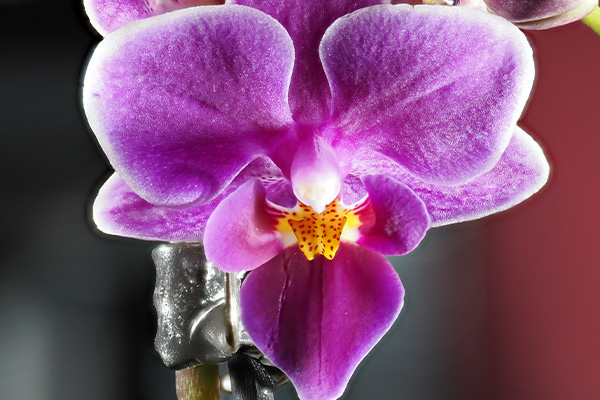 90mm | f/5 | 1/40 | ISO200
90mm | f/5 | 1/40 | ISO200
15 images stacked (on a tripod) 90mm | f/5 | 1/30 | ISO200
90mm | f/5 | 1/30 | ISO200
8 images stacked (hand-held)
Video Features
The OM-1 II comes equipped with some impressive video specs. You have 4K video at up to 60fps, FullHD at up to 120fps, OMLOG & HLG profiles and 10bit internal recording but you now also have a vertical video mode. This is perfect for creating and sharing content to social media and can be accessed with ease by simply turning the camera vertically before pressing the record button.
Conclusion
I had a lot of fun using this camera. There were so many useful features that I never knew I needed but now that I have used them I am going to notice their absence. One of which is the new Built-in Graduated Neutral Density filter which was incredibly easy to use and delivered great results.
This was made even easier thanks to the real star of the show, the 8.5 EV Stops of IBIS. I was able to take 1.5-second exposures handheld with no issues at all so using the ND and GND filters was easy even without the use of a tripod. The same could be said for the upgraded 14-bit RAW High-res mode.
The improved AI Subject Detection Autofocus was noticeable and the subject selection option made it effortless to be able to choose where your focus should be. Being able to switch out the erase button for a menu button was extremely useful when using a telephoto lens as you could change all your settings without having to move out of your composition.
I didn’t get as much of a chance as I would have liked to get into the video functionality of the camera but the vertical video mode was very intuitive to use and is a great little extra to have to aid in content creation.
And lastly, the rubberised dials were very welcome. It was cold the entire time that I was out shooting these videos and these made it a lot more comfortable for me to use.
Key Features
- 20MP Stacked BSI Live MOS Sensor
- 120FPS Pro capture
- In-camera focus Stacking
- ISO 25,600 - 102,400
- 8.5 Stops of in-body image stabilisation
- Fast 120FPS EVF
- IP53 Weather sealing
- AI Detection AF
Click to view OM System OM-1 Mark II full specifications>
Read next
- OM System Lands with a BANG | OM-1 Launch
- OM System M.Zuiko Digital ED 150-600mm F5.0-6.3 IS Lens | First Look
- OM System OM-5 Initial Impressions Review
Thank you!
Thanks for taking the time to read our blog, we really do hope they help you out and answer some of your questions. If you still have some unanswered, then please feel free to get in touch with our team of experts.
We have a LiveChat option on our website and we can, of course, be contacted via our email, we're also on the end of the phone too! Read more on how to contact us here >
Want to write for us?
If you've got experience with producing content on photo, video and/or optics products or techniques then we would love to hear from you. Contact our blog editor, Bea, with a sample of your work at [email protected].
- By Ben Wright
- 30 Jan 2024





























































